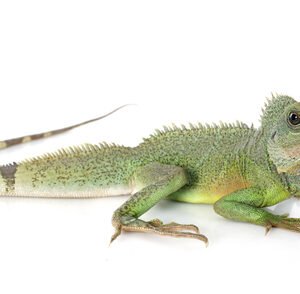chinese water dragon reptiles
Understanding the Chinese Water Dragon: Characteristics and Needs
chinese water dragon reptiles ,The Chinese Water Dragon, scientifically known as Physignathus cocincinus, is a captivating reptile that belongs to the Agamidae family. This species is native to the lush, tropical forests of China, Vietnam, and surrounding areas, where it thrives in humid environments. Adult water dragons typically measure between 3 to 4 feet in length, with males being larger and more vibrant than females. Their distinctive appearance features an elongated body, a prominent crest that runs along the back, and strikingly bright green or brown scales that provide excellent camouflaging capabilities amidst foliage.
To provide optimal care for a Chinese Water Dragon, prospective owners must understand their specific needs. A spacious enclosure is essential, ideally measuring at least 4 feet long for an adult. The habitat should mimic their natural environment, incorporating climbing branches, plants, and a water source for soaking. Proper temperature regulation is crucial; a basking area should maintain temperatures around 85-95°F, while the cool side of the enclosure should be kept at about 75-80°F. Adequate humidity, ranging from 60-75%, can be achieved through regular misting and the inclusion of water features.
In terms of diet, Chinese Water Dragons are omnivorous. Their diets should include a variety of insects, such as crickets and mealworms, alongside leafy greens and vegetables. It is vital to avoid overfeeding and to ensure that all food items are appropriately sized for the dragon’s age and size. Additionally, providing calcium and vitamin supplements is essential for preventing dietary deficiencies that could lead to health issues.
Monitoring their general health is also important. Common health concerns include respiratory infections and parasites, which can be mitigated through proper husbandry and hygiene. Enriching their habitat with toys and varied routines can enhance their physical and mental well-being, ultimately contributing to a thriving and healthy Chinese Water Dragon.
Natural Behavior and Habitat of the Chinese Water Dragon in the Wild
The Chinese Water Dragon (Physignathus cocincinus) is a remarkable reptile native to the humid lowland forests and riverine habitats of Southeast Asia, particularly found in southern China, Thailand, and Vietnam. These dragons thrive in warm, tropical climates where the temperatures typically range from 25 to 30 degrees Celsius. Their natural habitat is characterized by dense foliage, abundant water sources, and ample opportunities for climbing and basking, which are vital to their daily activities. These conditions not only sustain their dietary needs but also support their adaptable lifestyle.
In the wild, Chinese Water Dragons exhibit a range of fascinating behaviors. They are primarily arboreal, displaying an adept skill for climbing trees and shrubs to navigate their environment. Their strong limbs and long tails aid in maintaining balance while scouting for food, which mainly consists of insects, fruits, and small vertebrates. As social creatures, they often engage in hierarchical interactions, where dominance is established through displays of body language and physical posturing, particularly during mating seasons.
During the breeding season, typically coinciding with the onset of the rainy season, these dragons engage in elaborate courtship rituals. Males display their vibrant colors and perform head bobbing and tail waving to attract potential mates. After copulation, females exhibit nesting behaviors, seeking out suitable substrate for laying eggs in damp, sheltered areas. Understanding these natural behaviors is critical for reptile enthusiasts, as it illuminates their needs in captivity.
Creating a lifestyle that mirrors the Chinese Water Dragon’s native environment can lead to healthier and more playful pets. Providing climbing structures, adequate humidity, and varied diets mimics their natural habitat, helping to ensure that these reptiles can thrive and express themselves fully in domestic settings. Such considerations foster a positive human-animal bond and promote overall well-being.
Showing the single result
-
Agamas for Sale
Water Dragon
Original price was: $69.00.$59.00Current price is: $59.00. Add to basket

